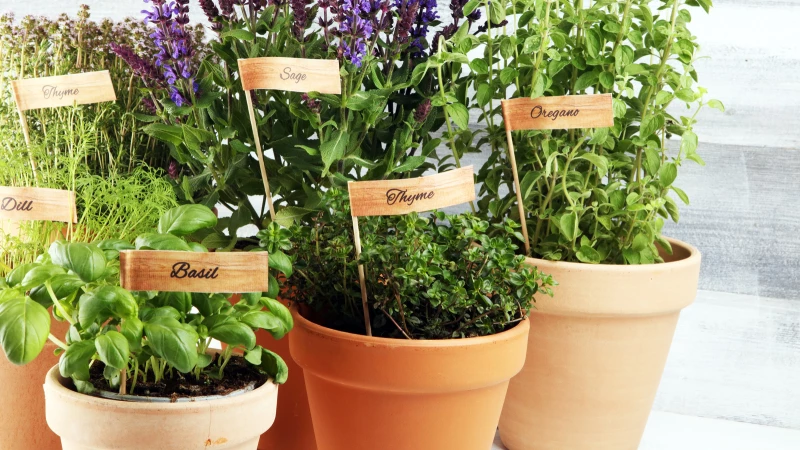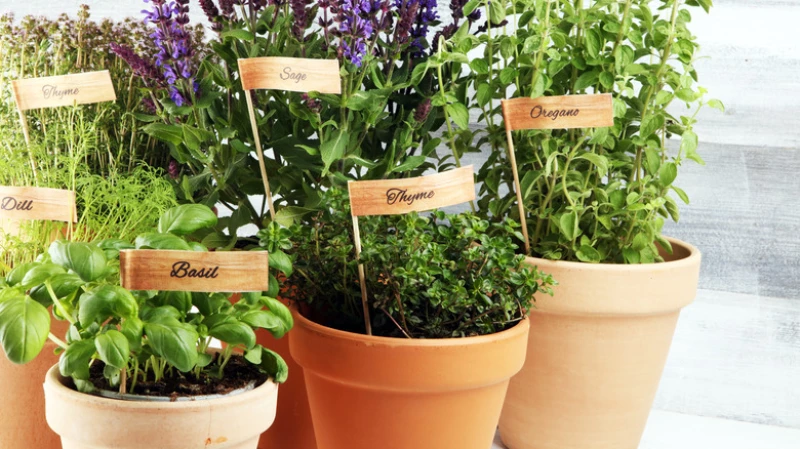Herb Garden: Sage and Oregano
Are you planning an herb garden for your yard and wondering which herbs to grow together? Sage is an excellent choice for your garden as a staple ingredient in many hearty, earthy flavor profile dishes. You'll find it has a sweet, though slightly bitter taste to it. If you're sold on sage for your herb garden, consider planting oregano with it. Both plants work together to support each other and offer a fantastic flavor profile when added to stews and soups.
Sage and Oregano Share the Same Needs
One of the best reasons to plant sage and oregano together, even in the same herb container garden, is because their growing needs tend to be very similar. Both of these plants need full sun to reach their full potential, and you'll likely want to keep them out of the shade, especially in cooler areas. Too much shade and moisture can stimulate the growth of mildew and fungus. Both herbs need the same basic type of soil conditions as well. Make sure the soil is loose and well-draining. It's always a good idea to add some level of organic matter to soil that's too sandy for these herbs. Also, the best pH level for them is between 6.5 and 7. If you're potting them, choose organic potting soil with organic matter for added nutrients to support solid growth.
The Mutual Benefits of Sage and Oregano

When it comes to planting herbs, sage and oregano make excellent companions. Not only do they thrive in similar growing conditions, but they also support each other's growth in various ways.
One of the benefits of planting sage is its enticing scent, which attracts pollinators and beneficial insects to the garden. The sweet aroma of sage lures in butterflies, adding beauty to the garden while also promoting pollination. Additionally, sage attracts hoverflies, which are predatory insects that feed on aphids, a common garden pest. By attracting hoverflies, sage helps to control aphid populations and prevent infestations.
Oregano, on the other hand, benefits from the presence of sage by enjoying increased air circulation. When planted together, sage and oregano create a more open and airy environment, allowing for better airflow between the leaves. This improved air circulation helps prevent the development of fungal diseases and promotes healthier growth for both plants.
When planting sage and oregano, it's important to give them enough room to spread out. Aim to plant seedlings about two feet apart to ensure they have adequate space to grow. While both herbs can be started from seed, planting them as seedlings allows for earlier harvesting in the early summer.
Once the plants begin to develop leaves, you can start clipping them for use in the kitchen. Both sage and oregano require minimal pruning, but regular harvesting encourages bushier growth and ensures a fresh supply of flavorful herbs for your culinary creations.
Oregano and sage are not only beneficial to each other, but they also provide advantages to other garden vegetables. The flowers of oregano are particularly attractive to pollinators, especially bees. By planting these two herbs near your tomatoes, peppers, or other vegetables, you can increase the amount of pollination that occurs. Additionally, oregano has a strong scent that repels pests like parasitic wasps. Having oregano nearby can effectively drive away spider mites and aphids. By cultivating both oregano and sage in close proximity, you can support their growth and harvest a larger quantity of these herbs each year. Both herbs can be used fresh, but they can also be dried and used throughout the winter to add warmth to dishes.








